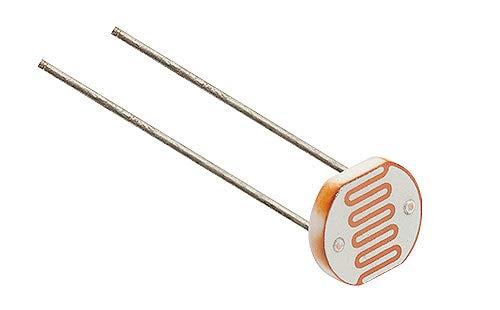
Light Dependent Resistors Allow the Microbit to detect light levels
Advantages of LDRs (Light Dependent Resistors)
- Cost-effective: LDRs are relatively inexpensive and readily available, making them a cost-effective choice for implementing line-following functionality in a robot.
- Simple operation: LDRs are easy to use and require minimal external components for their operation. They change resistance in response to changes in light intensity, allowing them to detect the presence or absence of a line.
- Easy integration: LDRs can be easily integrated into the circuitry of a line following robot. They can be connected directly to microcontrollers or other control systems, simplifying the overall design.
- Wide availability: LDRs are commonly used in various applications and are widely available in different sizes and shapes. This makes it easier to find suitable LDRs for specific requirements.
Disadvantages of LDRs
- Limited sensing capabilities: LDRs primarily rely on detecting changes in light intensity, which means they are sensitive to ambient lighting conditions. Factors such as variations in brightness, shadows, or different lighting sources can affect the accuracy of line detection.
- Slow response time: LDRs typically have slower response times compared to other sensors like infrared or ultrasonic sensors. This can limit the speed at which a line following robot can operate, as the LDRs may not be able to provide real-time feedback quickly enough.
- Lack of precision: LDRs have limited resolution when it comes to detecting fine details or distinguishing between different shades of colors. This can lead to less precise line following, especially in complex line patterns or environments with intricate markings.
- Susceptibility to environmental factors: LDRs are sensitive to environmental factors such as temperature and humidity. Changes in these conditions can affect the resistance characteristics of the LDRs, leading to inaccurate line detection.
It’s worth noting that while LDRs have some disadvantages, they have been widely used in line following robots and can still provide satisfactory performance, especially in simpler line following tasks or hobbyist projects. However, for more advanced and precise line tracking applications, other sensor technologies like infrared or color sensors may be preferred.